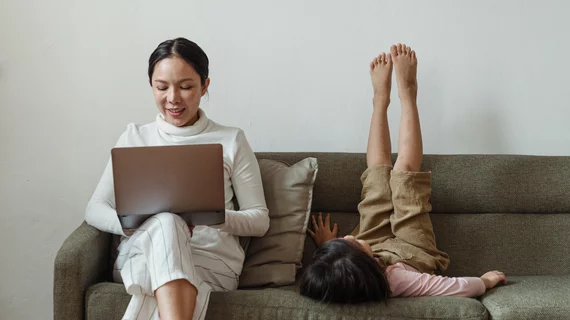Pediatric radiology is infamously taxing, as children are often sedated during scans to limit movement and improve image quality. It’s an effective method but comes with potential side effects and added costs.
Researchers recently discovered a way around these challenges by bringing parents directly into the exam, sharing their process in a study published in the European Journal of Radiology.
The group found most children eligible for what they call the “parent-child-combined” technique were between the ages of 3- and 6-years-old. The study sought to reduce patients’ anxiety and included 16 cardiac MRIs (CMR) performed in 14 pediatric patients.
Children were allowed to bring their favorite movie, and the procedure was explained in detail to both the parent and patient. During the scan, the positioning of the caregiver and child are key. The child is positioned supine, feet-first in the scanner, while the parent is facing their child and the scanner head-first, known as the decubitus position. Breaks and breathholds during the scan are avoided, so as to not distract the patient, and scan times are kept to a minimum.
Using this technique, 14 out of the 16 CMRs were successful. Of the two failed exams, one was on a 4-year-old who refused to wear the electrocardiogram electrodes, and the other in a 3-year-old whose guardian faced a language barrier which inhibited cooperation.
“Our preliminary experience with this technique has been encouraging,” Lars Grosse-Wortmann, with the Division of Cardiology, Department of Pediatrics at Doernbecher Children’s Hospital and Oregon Health and Science University in Portland, Oregon, and co-authors wrote. “This practice is more time-consuming than scanning older children, we hypothesize that the expense on resources is less than examining these patients under general anesthesia or sedation.”
You can view the full study in The European Journal of Radiology.

